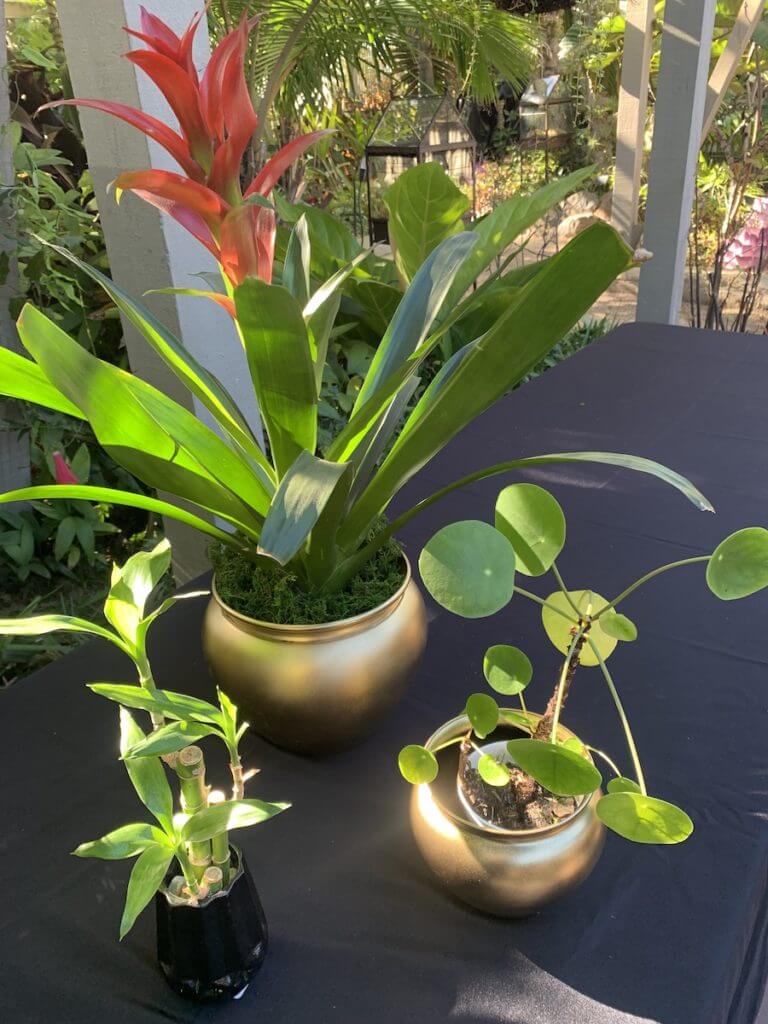The Auspicious Plants of Lunar New Year

Kiyoko Nakatsui
Education Coordinator
We are fortunate to have large Asian American communities in both Orange County and Los Angeles who will be celebrating the Lunar New Year this month and hosting festivities for the public to enjoy. This year at Sherman Library & Gardens we are marking the Lunar New Year with a display of auspicious plants that have special meanings during this time. We have also created a scavenger hunt which will guide our guests to find some of these lucky plants in our garden.
Many countries throughout Asia celebrate the new year according to the lunar calendar. This means the Lunar New Year celebration can begin anywhere between January 21st and February 20th. The ‘Spring Festival’ as it is also known, commemorates the transition of one Chinese zodiac sign to another and this year is the ‘Year of the Rabbit’. The 16-day celebration begins on Sunday, January 22 and these days are centered around family and tradition to ensure luck for loved ones in the new year.
Being home for the holidays is important for most people, but this is paramount for Lunar New Year. Everyone tries their best to be with their families during this holiday, because one’s actions during the new year celebrations are said to reflect on the year ahead. All the traditions of this holiday are done in order to bring luck and good fortune for the coming year, whether this is through food, festivities, or plants, everything has a meaning.
During the festivities many different foods are eaten to ensure a prosperous new year. Although the foods can vary from country to country, region to region, many of the foods and their meanings are similar: noodles for long lives, rice cakes for prosperity, dumplings for wealth, round fruits (especially tangerines and oranges) for good luck, and fish for abundance, are just some of the foods eaten. Portions of these foods may be displayed on altars and offered to the ancestors and gods. Food has its own language in Asian culture and, to some, it is a love language to show those around them that they care.
There are many traditions associated with this time. Many people start out the new year by going to temple and praying for luck, cleaning, and decorating their homes with red. There is also a tradition of gifting red envelopes filled with money (always an even amount as odd numbers are generally associated with funerals or death). The final day of Lunar New Year is often celebrated with a Lantern Festival.
Besides food and festivities, plants also play a role in Lunar New Year and are often given as gifts or displayed as decoration. As with food, each plant holds its own auspicious meaning. Lucky Bamboo, Dracaena sanderiana, has varied meanings based on the number of stalks, but is generally a symbol of luck, fortune, health, and prosperity. Money Tree, Pachira aquatica, is a symbol of affluence, nobility, and is thought to bring money. Orchids are thought to be a symbol of fertility and abundance. They can also signify refinement, luxury, and innocence. Bromeliads, Guzmania lingulata, is a symbol of the arrival of good fortune when red or yellow. Anthuriums, Anthurium andraeanum, with red blooms are a symbol of good fortune and prosperity. Peace lily, Spathiphyllum, is a symbol of healing, purity, and starting anew. Money plant, Pilea peperomioides, is said to bring more luck when it is received. It’s round leaves that resemble coins symbolize prosperity, good luck, and fortune. Citrus trees, like mandarins and tangerines, are said to bring luck, wealth, and prosperity. People will display a few or all these plants throughout their home’s all year round, but they are especially displayed during the new year festivities.
Come down to Sherman and to take a closer look at these plants in our garden, and enjoy the Lunar New Year celebrations this month.


